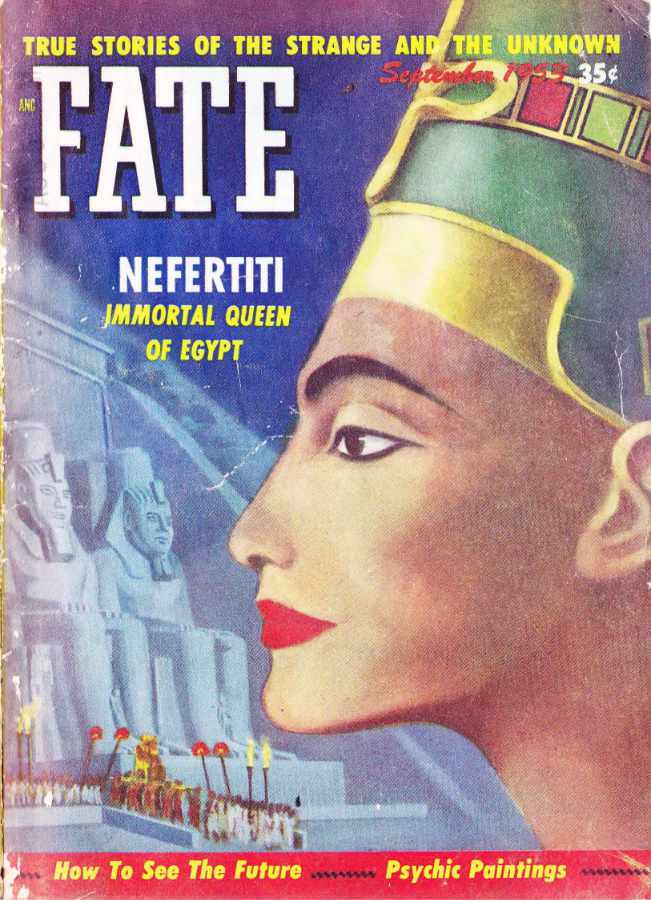Neferneferuaten Nefertiti (c. 1370 – c. 1330 BC) was a queen of the 18th Dynasty of Ancient Egypt, the great royal wife of Pharaoh Akhenaten. Nefertiti and her husband were known for a radical change in national religious policy, in which they promoted a form of proto-monotheism centred on the sun god Aten. With her husband, she reigned at what was arguably the wealthiest period of ancient Egyptian history. Some scholars believe that Nefertiti ruled briefly as Neferneferuaten after her husband’s death and before the ascension of Tutankhamun, although this identification is a matter of ongoing debate. If Nefertiti did rule as Pharaoh, her reign was marked by the fall of Amarna and relocation of the capital back to the traditional city of Thebes. She was made famous by her bust, now in Berlin’s Neues Museum. The bust is one of the most copied works of art of ancient Egypt. It was attributed to the sculptor Thutmose, and it was found in his workshop. Nefertiti had many titles including: Hereditary Princess, Great of Praises, Lady of Grace, Sweet of Love, Lady of The Two Lands, Lady of All Women, and Mistress of Upper & Lower Egypt.
| Alias Queen Nefirtiti |
| Real Names/Alt Names Queen Nefirtiti |
| Characteristics Historical Figures, Bronze Age |
| Creators/Key Contributors ○ |
| First Appearance Historical figure (b. 1370 BCE – d. 1330 BCE) |
| First Publisher ○ |
| Appearance List The Amarna Letters (c. 1350 BCE) – cache of clay tablets (diplomatic correspondence) from Amarna; “The Deeds of Suppiluliuma as Told by His Son; Mursili II” in Journal of Cuneiform Studies (1956); Predecessors of Cleopatra (1906) by Leigh North; The Amarna Age (1926) by James Baikie; Akhenaten – Pharaoh of Egypt (1968) by Cyril Aldred; Nefirtiti Immortal Queen (1953) in Fate Magazine |
| Sample Read “Nefirtiti, Immortal Queen” in Fate Magazine (Sep 1953) [LUM] |
| Description Neferneferuaten Nefertiti (c. 1370 – c. 1330 BC) was a queen of the 18th Dynasty of Ancient Egypt, the great royal wife of Pharaoh Akhenaten. Nefertiti and her husband were known for a radical change in national religious policy, in which they promoted a form of proto-monotheism centred on the sun god Aten. With her husband, she reigned at what was arguably the wealthiest period of ancient Egyptian history. Some scholars believe that Nefertiti ruled briefly as Neferneferuaten after her husband’s death and before the ascension of Tutankhamun, although this identification is a matter of ongoing debate. If Nefertiti did rule as Pharaoh, her reign was marked by the fall of Amarna and relocation of the capital back to the traditional city of Thebes. She was made famous by her bust, now in Berlin’s Neues Museum. The bust is one of the most copied works of art of ancient Egypt. It was attributed to the sculptor Thutmose, and it was found in his workshop. Nefertiti had many titles including: Hereditary Princess, Great of Praises, Lady of Grace, Sweet of Love, Lady of The Two Lands, Lady of All Women, and Mistress of Upper & Lower Egypt. |
| Source Nefertiti – Wikipedia |

